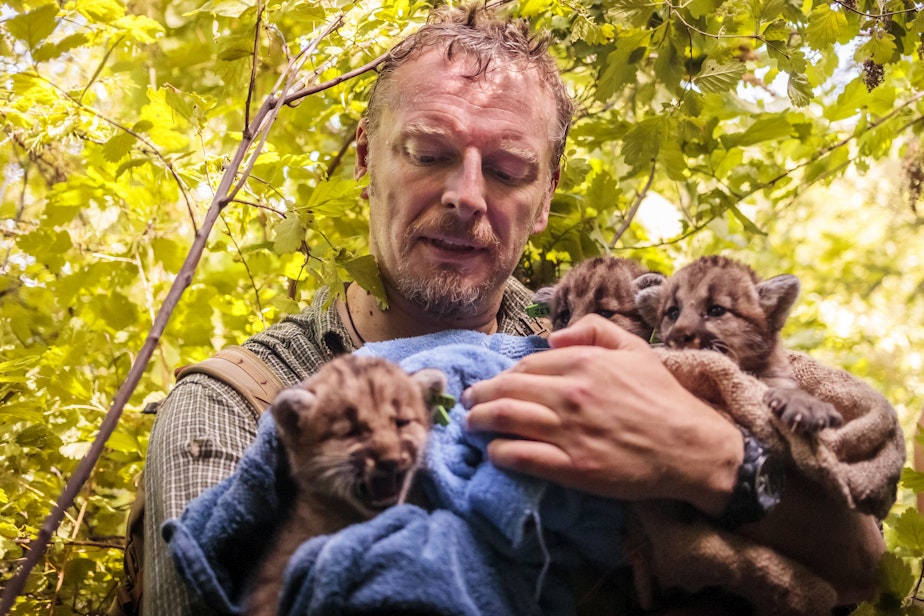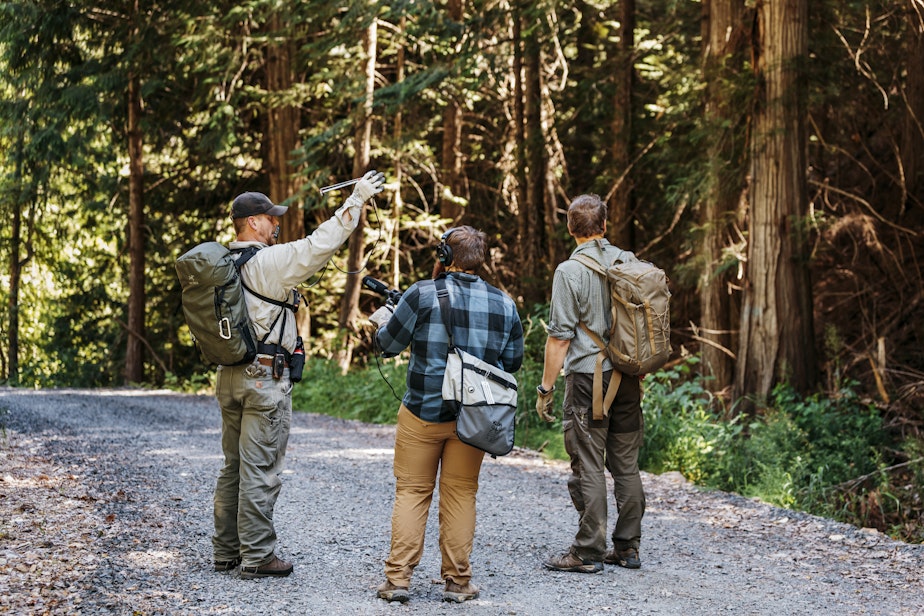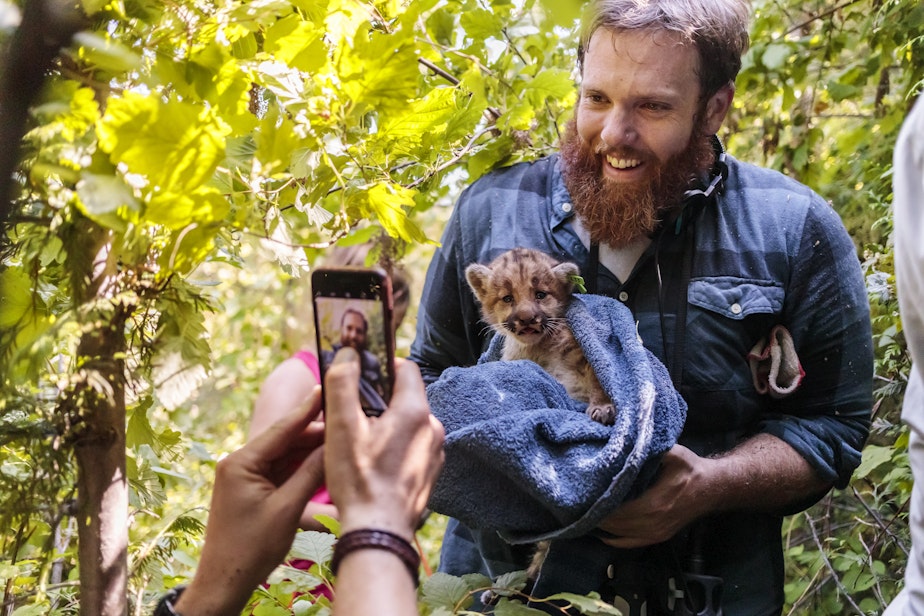Neighbor calls a biologist: ‘There’s a cougar in my backyard.’ And he says...

Trevor and Audrey Diddel live in Snoqualmie, Washington, a town 25 miles east of Seattle that has absorbed the big city’s growth and become a suburb at the foot of the Cascade Mountains.
Interstate 90 is close to their home, there’s a Subway around the corner — and a cougar in their backyard.

Interactions with the reclusive feline are increasing in this area.
Rocky Spencer, a cougar biologist with Washington state, said he got a complaint from a woman one morning saying, “There’s a cougar in my backyard!” Spencer replied, “Well, that’s funny, because I got a call this morning from a cougar. He told me there’s an woman in his front yard!”
Our backyards are getting bigger, and the cougar’s front yard is getting smaller. Since 1980 the population of Washington state has gone from 4 million to almost 7.5 million. Development has been spilling out from urban centers into cougar habitat.
Sponsored
To understand the impact cougars and humans have on each other we turn to Brian Kertson, a research scientist with the Washington State Department of Fish and Wildlife. He’s been studying cougars in this area for nearly 20 years, trying to learn how cougars are responding and adapting to human development.
On this episode of THE WILD, we follow Chris and Brian on an adventure to track down a cougar den and work out how we continue to coexist with cougars.
Sponsored
Brian explained a bit of the process:
Capturing the kittens at the den is critical for accurately quantifying reproduction for use in population models. It is the most reliable way to get a measure of the number of kittens born to adult females in a given year (i.e., maternity) and ultimately, fecundity (a combination of adult female survival and reproduction).
Marking the kittens also allows us to identify them after they become independent.
We do our best to make the process as stress-free as possible, for both the adult female and the kittens.
He updated us later to say that after this trip to the den, the adult female only moved it about 70 meters from the location we found it. And at least two of those kittens were still alive this winter.
Note: We of course have to warn you against handling cougar kittens. These kittens were being handled for tagging and research.
Sponsored

Recommended links from Chris Morgan:
- The Uproar Fund
- Mountain Lion Foundation
- Cougar Fund
- Western Wildlife Outreach
- Wild Futures
- Chris Morgan Wildlife
Chris Morgan dedicates this inaugural episode to biologist Rocky Spencer, who died in 2007: "An amazing friend to the wild animals he loved and so many humans, too."
THE WILD is a production of KUOW in Seattle in partnership with Chris Morgan and The UPROAR Fund. It is produced by Matt Martin and edited by Jim Gates. It is hosted, produced and written by Chris Morgan. Fact checking by Apryle Craig. Our theme music is by Michael Parker. Produced for the web by Kara McDermott.





